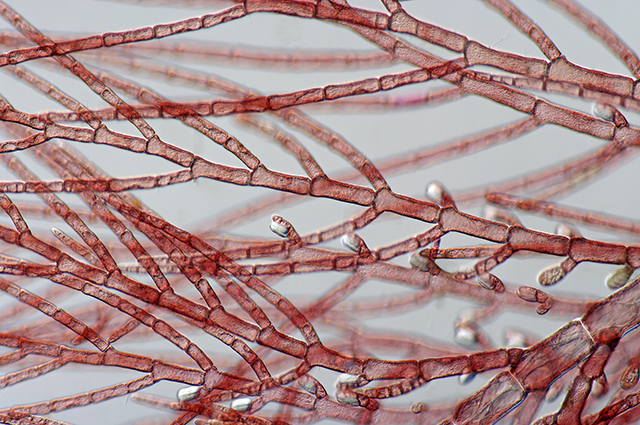
The algae, when used either in powder or gel form, has shown promise in managing the underlying factors of the condition during the testing stages. The research, which was published in the African Journal of Traditional, Complementary and Alternative Medicines, focused on the efficacy of red algae in treating joint pain and cartilage damage caused by osteoarthritis.
Osteoarthritis, which is also known as degenerative joint disease or degenerative arthritis, is a condition where the cartilage in between bones breaks down, resulting in pain, swelling, and difficulty in moving the joint.
Cartilage is a rubber-like material that covers the end of each bone, giving joints a smooth, gliding surface that can also serve to cushion the bones. As the condition becomes worse, the friction in between bones and cartilage may cause these to chip. Once these are chipped, they produce an inflammatory response in the body, with cytokines and enzymes developing which may impact the joint even further.
Osteoarthritis affects all people; however, the condition is more prevalent in those who are over 65 years of age.
This was the launching pad for the study. Drug treatments that are promoted to addressing OA are not made for long-term use, given its potentially dangerous side effects. Researchers, therefore, have now turned to novel and safe treatments, one of which is marine biotechnology. (Related: Dietary fiber found to reduce osteoarthritis knee pain in first-ever study of its kind.)
Marine algae have been known to contain many bioactive agents that are known to provide the body with multiple benefits. Therefore, the study also evaluated the toxicity of red algae using the stringent standards of the Organization for Economic Co-operation and Development (OECD). A. fragilis was examined in vitro to understand its physical and chemical constitution. This was done to gather its chemical profile, amino acid content, proteinase inhibition levels, stabilization activity for the red blood cell membrane, ability to protect against free radicals, total antioxidant potency, and its ability to counter the effects of nitric oxide.
To test the properties of red algae, they were first collected, then rinsed with seawater to remove excess sand, debris, dirt, and epiphytes. The plants were then air-dried in shade for a week, then milled. The powder was then stored at -20 degrees Celsius until it was used. To create the gel, researchers added 100 grams of red algae powder to 300 mL of water for two hours. This was then boiled to produced a semisolid gel and was cooled at room temperature.
The resulting red algae powder was tested for its anti-arthritic effect, particularly in its inhibitory activity, through testing it against proteinase. A heat-induced hemolysis was used to evaluate the powder's anti-inflammatory properties, and DPPH (1,1- diphenyl-2-picrylhydrazyl) was used to measure its ability to inhibit free radicals.
To study the toxicity of red algae, researchers used murine tests. Red algae powder was mixed with distilled water and was given to rats to drink. During this time, their vital organs and liver function were observed.
The results showed that both red algae powder and gel contain bioactive components such as alkaloids, flavonoids, and terpenoids. They also contain essential amino acids like lysine, phenylalanine, and leucine.
As for its proteinase inhibitory condition, red algae was able to inhibit as much as 55 percent of proteinase in the test. It also exhibited anti-inflammatory properties, by being able to resist hemolysis (red blood cell damage) by as much as 78 percent. Researchers were also able to discover the oxidant inhibition potential of red algae, with it being able to outperform the ascorbic acid control in inhibiting free radical and nitric acid scavenging. In vivo studies also confirmed that red algae did not have any toxic symptoms.
Of the results, the researchers wrote: "The potency of AFP [red algae powder] and AFG [red algae gel] to be inflammatory-proteinase-oxidant inhibitor may be due to the cumulative synergistic relationship among its bioactive constituents."
They also proffered red algae gel and powder to be potential anti-osteoarthritis agents because of the chemicals present which prevent the progression of the condition. While this is only the beginning, researchers are optimistic about the results. "This study postulates that these bioactive compounds may prevent OA initiation, or arrest its progression, or enhance the repair of the joint cartilage," they concluded.
Read more research about how red algae and other medicinal plants at Science.news.
Sources include:
Please contact us for more information.























